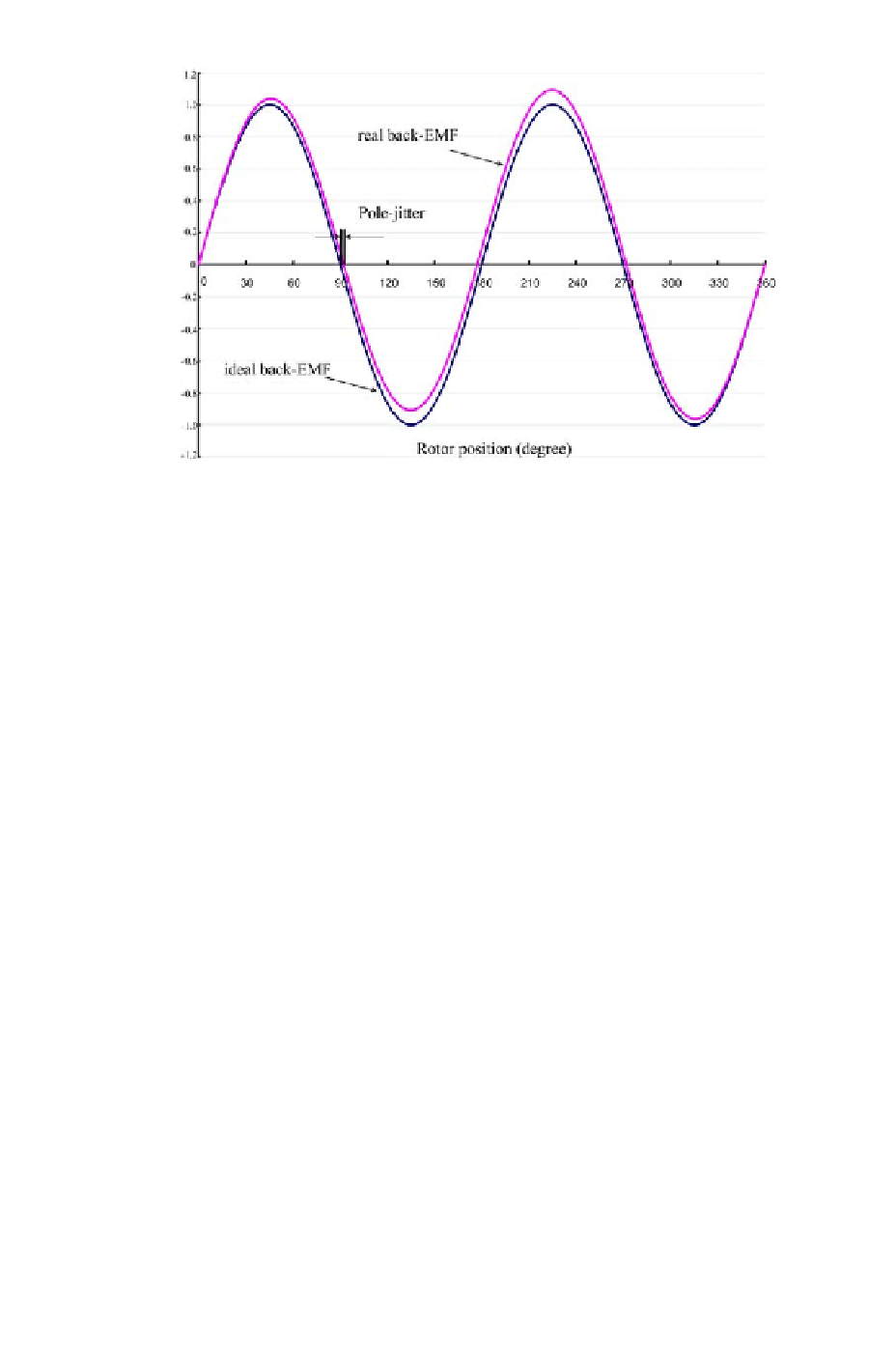Hardware Reference
In-Depth Information
Figure 4.44: Pole jitter of back-EMF waveforms.
4.3.3 Load of Spindle Motor
In HDDs, the disks for storing information are mounted on the shaft of the
spindle motor, and they rotate together with the rotor of the motor. Depending
on the designed capacity of the HDD, it can come with one disk or more disks.
When more than one disks are used, they are separated from one another
using a spacer put between them. All the disks are rigidly
fi
xed to the shaft
of the spindle using clamps. A spindle shaft with two disks is illustrated in
Figure 4.45. Increasing the number of disks mounted on the shaft has a direct
consequence on the capacity of the HDD. Therefore, many HDD products use
3, or even more, disks.
The load of the spindle motor consists of the friction between the disk
surfaceandthefast
fl
owing air inside the enclosure (also known as the windage
friction) and the friction between the sliders and disk surfaces. The former is
the main contributor to the load of spindle motor. The relationship between
the windage friction and the speed of rotation is very complicated. The load
due to the windage friction can be described by the equation,
p
f
= C
f
D
4.6
n
2.8
,
(4.72)
f
where, C
f
is a coefficient whose value depends on the structure of HDD struc-
ture and number of disks used, D
f
the diameter of the disk, and n is the
rotational speed of the motor [60]. Therefore, the load of the spindle motor
is affected signi
fi
cantly with changes in rotational speed and diameter of the
disks.

